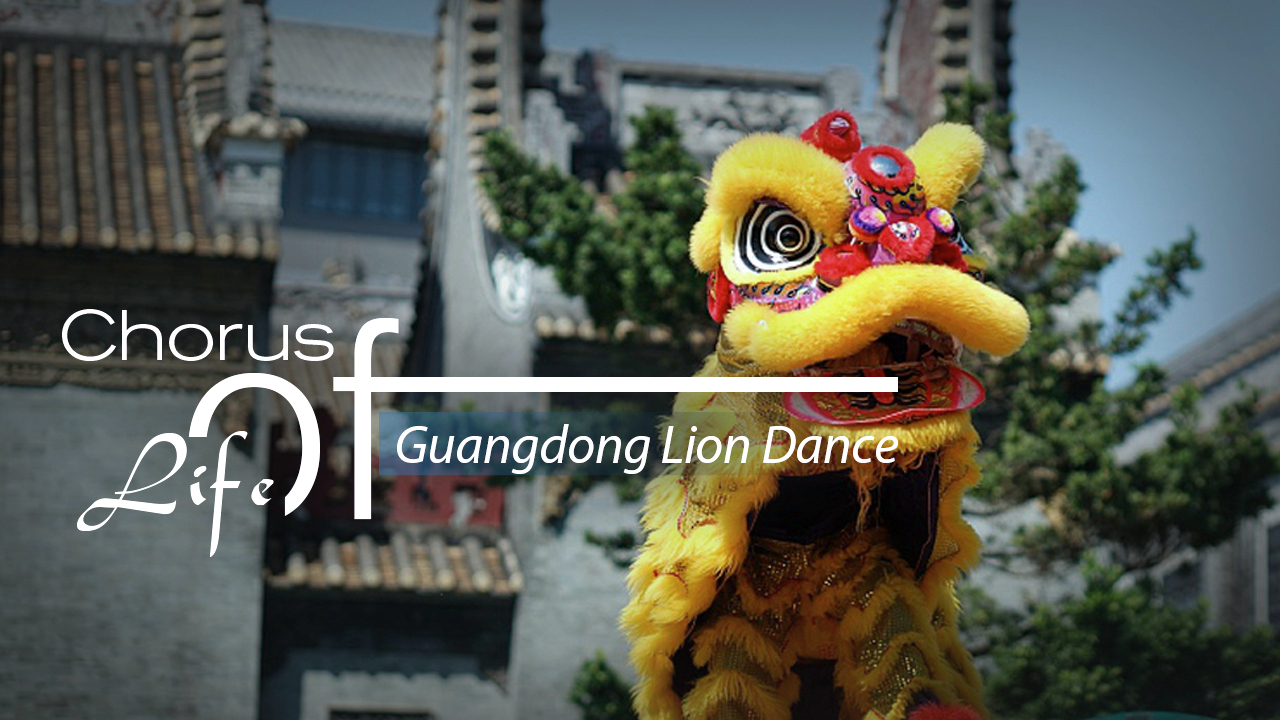
Culture China
16:22, 03-Jun-2019
Chorus of Life: Guangdong Lion Dance
By Ge Yunfei, Lai Shiwen
01:46

When the sound of drums, cymbals, and gongs reaches its climax, an ornate stylized lion, masked by lion dancers, approaches a head of lettuce hung on the front door of a shop, completing the traditional "cai qing" performance (literally, picking the green).
This performance are usually seen during the Spring Festival or when a new business opens. In Guangdong culture, people believe that the lion dance brings good fortune and dispels negative energy.
The dance itself goes back to the legend of a monster named "Nian." Nian attacked villages every year, eating crops and even children. It is purported that the beast was afraid of loud noises, fire, and the color red. To scare away Nian, villagers used to dress up in red robes and make loud noises with drums and empty plates, performing the initial incarnation of the lion dance.
A lion's colors also signify different characters. The traditional lion dance in Guangdong uses a red, yellow and black lion representing three essential themes.
The yellow lion, also called “Liu Bei Lion,” represents power, royalty, and justice, since Liu Bei was the first emperor of the Shu-Han Kingdom during China's Three Kingdom Period. The red lion is also called “Guan Gong Lion.” Guan Gong, the second brother of Liu Bei, is famous for his loyalty in China's history. The red lion is believed to bring victory and prosperity. The black lion is also called “Zhangfei Lion.” Zhang Fei is the youngest brother of Liu Bei, and he is well-known for his fearlessness in wars. This “Zhangfei Lion” is an expression of the determination that a newly launched business needs.
Typically the dance of a lion is controlled by two performers, with one operating the head and the other holding the tail. In Guangdong, most of the lion dancers are well-trained in kung-fu because lion dance requires them to produce fierce movements to show power and masculinity in this festive performance.

SITEMAP
Copyright © 2018 CGTN. Beijing ICP prepared NO.16065310-3
Copyright © 2018 CGTN. Beijing ICP prepared NO.16065310-3